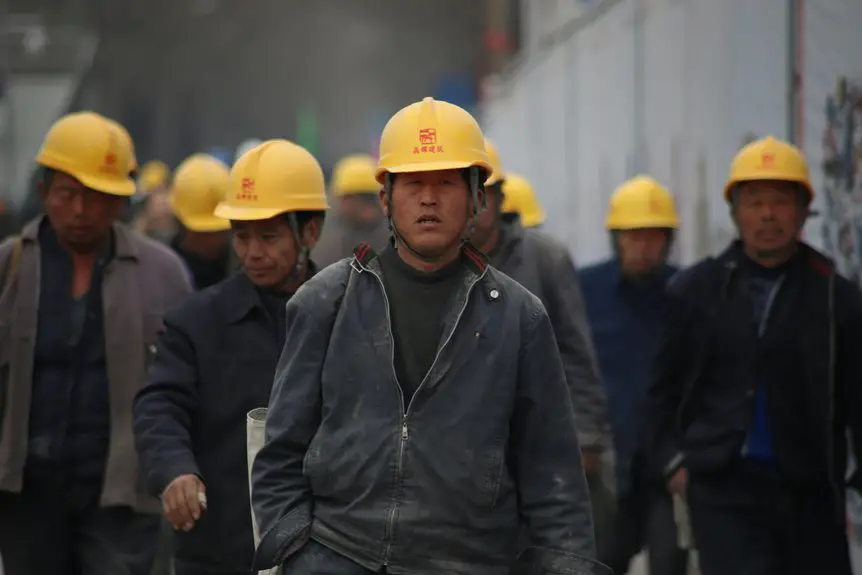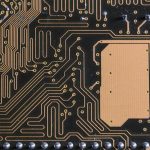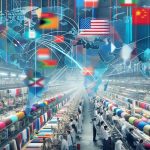You rely on China for over half of the world’s PCBs due to its vast manufacturing network, cost efficiency, and advanced technology. China’s dominance stems from government support, skilled labor, and a strong supply chain. While you benefit from competitive pricing and innovation, you may face communication and quality control challenges. Environmental regulations and sustainability efforts are shaping the industry’s future. As you explore further, you’ll discover how ongoing innovation drives China’s leadership in PCB and assembly fabrication.
Table of Contents
Key Takeaways
- China produces over half of the world’s PCBs, ranging from simple to complex multilayer designs, dominating global supply.
- Government support, including tax incentives and research funding, has propelled China into a leading PCB manufacturing hub.
- Strict quality certifications and advanced technologies like HDI and automated inspection ensure competitive, reliable PCB products.
- Chinese PCB fabricators offer cost-effective solutions with large production capacity but require careful communication and quality control.
- The industry is evolving with automation, sustainability focus, and international collaboration to maintain global leadership in PCB fabrication.
Overview of China’s PCB Manufacturing Industry
China dominates the global PCB manufacturing industry, producing more than half of the world’s printed circuit boards.
When you look at the market, you’ll find a vast network of manufacturers ranging from small workshops to large-scale factories. This diversity allows you to access a variety of PCB types, from simple single-layer boards to complex multilayer designs used in advanced electronics.
The industry’s focus on innovation and efficiency means you can expect competitive pricing and quick turnaround times. Additionally, China’s extensive supply chain guarantees you have reliable access to raw materials and components.
If you need customization, many manufacturers offer flexible solutions tailored to your specifications. Overall, China provides a thorough and robust environment for PCB fabrication that supports your needs in various sectors.
Historical Growth and Development of PCB Fabrication in China
You’ve probably noticed how China’s PCB industry grew rapidly from its early days, fueled by expanding domestic demand.
The government’s support played a vital role in accelerating this growth through policies and investments.
Let’s explore how these factors shaped the development of PCB fabrication in China.
Early Industry Expansion
Although the global demand for printed circuit boards (PCBs) surged in the late 20th century, the industry in China was still in its infancy. You’d find only a handful of factories, mostly serving local markets with simple designs. As you trace this early expansion, you’d see rapid learning and adaptation beginning in the 1980s. Small-scale production grew into larger operations, supported by increasing foreign investment and technology transfers. This set the stage for China’s rise as a key player in PCB fabrication.
| Year | Key Development |
|---|---|
| 1980s | Initial small factories |
| Late 1980s | Foreign tech introduction |
| Early 1990s | Expansion of capacity |
| Mid 1990s | Rise in export volume |
| Late 1990s | Shift to complex designs |
Government Support Impact
Building on the rapid growth seen through foreign investment and expanding production in the 1980s and 1990s, government policies played a major role in shaping the PCB industry’s trajectory.
You’ll find that China’s strategic support accelerated the sector by:
- Offering tax incentives and subsidies, which lowered operational costs and attracted more manufacturers.
- Establishing Special Economic Zones that encouraged innovation and streamlined exports.
- Funding research centers dedicated to PCB technology, boosting quality and efficiency.
These moves didn’t just help Chinese companies grow—they transformed China into a global PCB powerhouse.
When you consider how government backing created a favorable environment, you see why China quickly outpaced competitors and became a go-to source for PCB fabrication worldwide.
This support laid a critical foundation for sustained industry dominance.
Key Factors Driving China’s Dominance in PCB Production
When you look closely at the electronics industry, you’ll see that China’s dominance in PCB production stems from several key factors. You can attribute this leadership to a combination of advanced manufacturing infrastructure, skilled labor, strong supply chain integration, and continuous innovation. These elements work together to make China the go-to hub for high-quality, reliable PCBs.
| Key Factor | Description |
|---|---|
| Manufacturing Infrastructure | State-of-the-art factories and equipment |
| Skilled Workforce | Large pool of trained, experienced workers |
| Supply Chain Integration | Seamless coordination of materials and components |
| Innovation & R&D | Investment in new technologies and processes |
Understanding these drivers helps you grasp why China remains at the forefront of PCB production globally.
Cost Advantages and Economic Impact on Global Supply Chains
Since China offers significant cost advantages in PCB fabrication, it has reshaped global supply chains and how companies manage production. You benefit from lower labor costs, reduced material expenses, and streamlined logistics, which directly cut your manufacturing expenses.
This shift allows you to compete more aggressively in price-sensitive markets. However, it also means you must navigate dependencies on Chinese suppliers, which can affect your production timelines.
Competing aggressively on price requires managing dependencies on Chinese suppliers that may impact your production schedules.
Here are three key impacts you’ll experience:
- Cost savings that boost your product’s market competitiveness.
- Supply chain centralization that demands strategic risk management.
- Increased production scalability enabling faster response to demand changes.
Understanding these factors helps you optimize your sourcing strategies while balancing cost and operational risks.
Quality Standards and Technological Advancements in Chinese PCBs
You’ll find that Chinese PCB manufacturers meet strict quality certifications to guarantee reliability and performance.
They’re also pushing the envelope with innovations like advanced materials and precision manufacturing techniques.
Understanding these standards and technologies is key to appreciating China’s growing influence in the PCB industry.
PCB Quality Certifications
Although steering through the world of PCB manufacturing can be complex, understanding quality certifications helps you gauge the reliability of Chinese PCBs.
These certifications serve as your assurance of consistent performance and safety. When evaluating Chinese PCBs, watch for:
- ISO 9001 – This certifies a manufacturer’s quality management system, ensuring products meet customer and regulatory requirements.
- UL Certification – It guarantees that PCBs comply with safety standards, which is essential for electrical reliability.
- IPC Standards – These industry-specific certifications confirm adherence to stringent manufacturing and testing protocols.
Innovations in PCB Technology
When you explore China’s PCB industry, you’ll find rapid innovations that push quality standards and technological capabilities forward.
Manufacturers continuously adopt cutting-edge processes like HDI (High-Density Interconnect) and advanced materials, enabling smaller, faster, and more reliable circuit boards.
You’ll notice the integration of automated optical inspection and AI-driven quality control, reducing defects while enhancing production efficiency.
China’s PCB fabricators also lead in flexible and rigid-flex PCB technology, meeting demands from wearable devices to automotive electronics.
By investing heavily in R&D, Chinese companies guarantee compliance with global standards such as IPC and UL while delivering innovation that rivals Western counterparts.
If you’re sourcing PCBs, you’ll appreciate how these advancements translate into cost-effective, high-performance products tailored for diverse industries worldwide.
Major Chinese PCB Manufacturers and Their Global Influence
As you explore the world of PCB fabrication, you’ll find that major Chinese manufacturers play a crucial role in shaping the global market. Companies like Shenzhen Fastprint, Jiangsu Meizu, and Venture Electronics have grown rapidly, setting high standards for quality and innovation.
Their global influence is evident in:
- Competitive Pricing: They offer cost-effective solutions without sacrificing performance, making advanced PCBs accessible worldwide.
- Massive Production Capacity: Their ability to handle large orders guarantees timely delivery for global clients.
- Technological Advancement: Continuous investment in R&D keeps them ahead in multilayer and flexible PCB technologies.
Challenges Faced by Foreign Companies Working With Chinese Fabricators
When you work with Chinese fabricators, you might face communication barriers that slow down project progress.
Ensuring consistent quality control can also be a tricky challenge.
Let’s explore how these issues impact your PCB manufacturing experience.
Communication Barriers
Although you may have a clear design and specifications, communication barriers often complicate collaborations with Chinese PCB fabricators. Misunderstandings can arise from language differences, cultural nuances, and time zone gaps.
These obstacles can slow down production and lead to costly errors. You might face:
- Difficulty explaining technical details precisely, risking misinterpretation.
- Delays caused by slow responses or unclear emails.
- Challenges coordinating calls across time zones, making real-time problem-solving tough.
To overcome these hurdles, you’ll need patience, clarity, and persistent follow-up. Using visuals, simple language, and confirming details repeatedly can ease confusion.
Despite these challenges, effective communication is essential for a smooth partnership that meets your quality and delivery expectations.
Quality Control Issues
Dealing with quality control issues can seriously impact your project’s success when working with Chinese PCB fabricators. You might face inconsistent product standards, which stem from varying manufacturing processes or insufficient oversight.
Defects like misaligned layers, poor soldering, or contamination can slip through if inspections aren’t thorough. To avoid surprises, you’ll need to establish clear quality expectations upfront and insist on rigorous testing protocols.
Regular factory audits and sample reviews help catch problems early. Also, partnering with a trusted third-party quality inspector can provide unbiased assessments.
Environmental and Regulatory Considerations in PCB Fabrication
Since PCB fabrication involves various chemicals and processes, you must understand the environmental and regulatory challenges that manufacturers in China face.
These challenges shape how responsibly your supplier operates and directly impact sustainability. China has tightened regulations to reduce pollution, but enforcement varies by region. This means you need to be vigilant about compliance and environmental impact.
Here are three key concerns:
- Waste management: Improper disposal of toxic chemicals can harm local ecosystems and communities.
- Emissions control: Factories must limit air pollutants, but some still struggle with outdated equipment.
- Water usage: High water consumption and contamination risks require strict treatment protocols.
The Role of Innovation and R&D in China’s PCB Industry
When you explore China’s PCB industry, you’ll find that innovation and R&D drive much of its rapid growth and global competitiveness.
Chinese manufacturers invest heavily in developing advanced materials, improving manufacturing processes, and integrating smart technologies. This focus allows you to access high-quality, complex PCBs that meet evolving industry standards.
You’ll notice Chinese firms collaborate with universities and research institutes to push boundaries in miniaturization and multilayer designs. Their commitment to continuous improvement means you benefit from faster prototyping, better reliability, and competitive pricing.
Future Trends and Predictions for China’s PCB and Assembly Market
As China continues to advance its PCB and assembly capabilities, you’ll see emerging trends shaping the market’s future.
You can expect the following to redefine the industry landscape:
- Greater Automation: Factories increasingly use smart robotics and AI, boosting speed and precision while cutting costs.
- Sustainability Focus: Environmental regulations and green manufacturing will drive eco-friendly materials and processes.
- Global Collaboration: China will deepen partnerships with international firms, fostering innovation and expanding market reach.
Frequently Asked Questions
How Do Cultural Differences Impact Business Negotiations With Chinese PCB Manufacturers?
You’ll find that respecting hierarchy, valuing relationships, and practicing patience can make negotiations smoother. Avoid direct confrontation, and focus on building trust, since cultural differences shape communication styles and decision-making with Chinese PCB manufacturers.
What Are the Common Payment Terms and Financial Practices in China’S PCB Industry?
Did you know 70% of Chinese PCB manufacturers require 30% upfront payment? You’ll usually pay a deposit, with the balance on delivery. They prefer T/T or L/C, so make sure your payment terms are clear and secure.
How Does China’S PCB Industry Compare With Taiwan’S in Terms of Innovation?
You’ll find China focuses on high-volume, cost-effective PCB production, while Taiwan leads in innovation and advanced technologies. Taiwan’s firms invest more in R&D, pushing cutting-edge designs, so it outpaces China in tech breakthroughs and specialized applications.
What Logistics Challenges Exist When Shipping PCBS From China Internationally?
You’ll face delays from customs inspections, fluctuating shipping costs, and port congestion when shipping PCBs internationally. Plus, unpredictable global events and strict packaging requirements can complicate logistics, so plan carefully to avoid costly setbacks.
How Do Language Barriers Affect Communication in PCB Fabrication Projects With China?
You might struggle with misunderstandings or delays because language barriers can cause unclear instructions and misinterpretations. Clear, simple communication and using translators or bilingual contacts can help you avoid costly mistakes in fabrication projects.
- Understanding Burnout Fabric Composition and Content Labels - June 20, 2025
- A Guide to Hand-Dyed Burnout Silk Velvet Fabric - June 20, 2025
- Project Spotlight: The Otis Aurora Burnout Velvet Fabric - June 20, 2025







